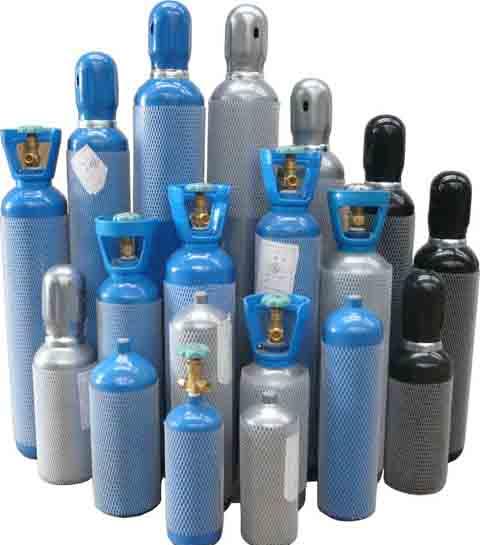1. Nominal working pressure
For the cylinder containing permanent gas, it refers to the limited filling pressure of the permanent gas at the reference temperature (generally 20 ℃); The upper limit of the gas pressure in the cylinder containing liquefied gas when the temperature is 60 ℃.
The nominal working pressure of the cylinder containing high-pressure liquefied gas shall not be less than 8MPa. The nominal working pressure of gas cylinders containing toxic and highly toxic liquefied gases shall be appropriately increased.
2. Maximum temperature rise pressure
Fill according to the Safety Supervision Regulations for Gas Cylinders or the gas cylinder standards, and the pressure of the medium in the cylinder at the maximum allowable working temperature.
3. Allowable pressure
The maximum allowable pressure of gas cylinder during filling, use, storage and transportation.

4. Reference temperature
The filling standard temperature specified by the gas product standard.
5. Maximum operating temperature
The maximum service temperature allowed by the cylinder standard.
6. Nominal volume
Volume class in the cylinder volume series. Generally, the volume below 12L (including 12L) is small, the volume above 12L to 100L (including 100L) is medium, and the volume above 100L is large.
7. Water volume
The actual volume of the cylinder cavity.
8. Filling coefficient
The maximum gas mass allowed to be filled in the cylinder per unit water volume specified in the standard.
9. Filling volume
Mass of gas filled in the cylinder
10. Gas phase space
The space occupied by the meteorological part when the medium in the bottle is in the state of gas-liquid two-phase equilibrium coexistence.
11. Full liquid
The state when the meteorological space in the bottle is 0.
12. Net weight of gas cylinder
The actual weight of the bottle body and its non detachable connecting parts (excluding the detachable parts such as bottle valve, bottle cap and shockproof ring).
13. Tare weight
Weight of bottle body, all accessories and fillers.
14. Full bottle weight
The total weight of the cylinder filled with gas.
15. Service safety factor
The ratio of the hydrostatic test pressure to the maximum temperature rise pressure.
16. Volume deformation test
Test for measuring volume deformation of gas cylinders by hydrostatic test
17. Volume deformation test by external measurement
Test for measuring the volume deformation of gas cylinders from the outside by the water jacket method.
18. Volume deformation test by internal measurement
Test for measuring the volume deformation of gas cylinders from the inside
19. Full volume deformation
The total volume deformation of the cylinder body under the hydrostatic test pressure is between the volume elastic deformation and the volume residual deformation.
20. Volumetric elastic deformation
The volume deformation that can be recovered after the hydrostatic test pressure is removed.
21. Volume residual deformation
The volume deformation of the bottle that cannot be recovered after the hydrostatic test pressure is removed.
22. Volume residual deformation
Percentage of residual deformation of bottle volume to total volume deformation.
23. Macro inspection of gas cylinder
It generally refers to the inspection of macro shape, geometric tolerance and other visible surface defects of internal and external surfaces.
24. Flammable gas
The lower explosive limit of the gas mixed with air is less than 10% (volume ratio), or the difference between the upper and lower explosive limits is greater than 20%.
25. Natural gas
A gas that can spontaneously combust in contact with air or oxidant at a temperature below 100 ℃.
26. Toxic gas